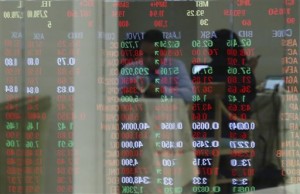The research arm of debt watcher Moody’s expects the Philippine economy to have had grown by a slower 6.6 percent year-on-year in the second quarter partly due to high inflation.
The forecast of Moody’s Analytics was lower than the 6.8-percent gross domestic product (GDP) growth in the first quarter and the revised 6.7-percent expansion a year ago.
Its projection was also below the government’s full-year growth target of 7-8 percent for 2018.
The government will announce the second-quarter economic performance on Aug. 9.
“Consumer spending is healthy, thanks to steady inflows of overseas worker remittances and a firm labor market. Investment has been robust and is likely to remain strong, as the government boosts infrastructure development. External demand has remained solid,” Moody’s Analytics said.
However, it warned that “rising price pressures will need watching.”
“Headline inflation is at a five-year high and is well above the Bangko Sentral ng Pilipinas’ target band of 2-4 percent, which has prompted two policy rate hikes this year,” Moody’s Analytics noted.
Headline inflation averaged 4.3 percent in the first half.
In the second quarter alone, the average rate of increase in prices of basic goods and services was 4.8 percent, faster than the first-quarter average of 3.8 percent.
In May, Socioeconomic Planning Secretary Ernesto M. Pernia said the first-quarter GDP could have expanded by about 7.5 percent were it not for the higher-than-expected rise in consumer prices.
Pernia, who heads the National Economic and Development Authority, had said inflation was the “spoiler.”
The Neda chief said the government was working to temper inflation while keeping the growth momentum.
“Sustaining high economic growth is needed to expand supply that tempers inflation in the medium to long term,” Pernia had explained.
Pernia was also optimistic that inflation “will be tempered in the short term, with normalizing peso, oil, rice and fish prices.”
Economic managers earlier jacked up their inflation forecast for 2018 to 4-4.5 percent from 2-4 percent previously.


